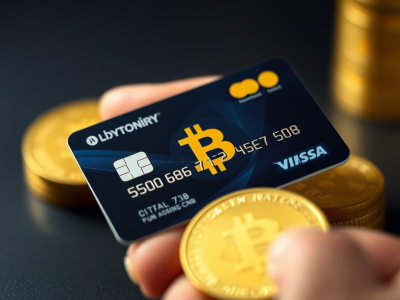
To optimize your cryptocurrency transactions, it is critical to analyze the various fees associated with crypto cards. These costs can significantly impact your overall expenses when using wallets and making payments. Always check for hidden charges before selecting a card or service.
Different exchanges offer varying fee structures that can affect how much you pay during transactions. Be aware of transaction fees, currency conversion costs, and any annual fees charged by the card provider. Understanding these elements will enable you to make more informed decisions regarding your investments.
Consider comparing different services to identify which ones align best with your transaction habits. Some providers may have lower fees for specific types of payments, while others might offer rewards or cashback options that could offset your costs. Take the time to evaluate all aspects of the services offered before committing.
Types of Cryptocurrency Card Fees
Understanding the specific fees associated with cryptocurrency cards is essential for optimizing your financial management. Here are the primary types of fees you should be aware of:
- Transaction Fees: These fees apply every time you use your cryptocurrency card for payments. They can vary based on the card provider and the merchant's payment processor.
- Exchange Fees: If you convert cryptocurrency to fiat currency for a transaction, exchange fees may apply. These costs can differ significantly across exchanges.
- ATM Withdrawal Fees: When using your card at ATMs to withdraw cash, additional charges may be incurred. Check the fee structure with your card issuer before making withdrawals.
- Monthly Maintenance Fees: Some services charge a monthly fee for maintaining your account or card. This can impact long-term usage costs.
- Load/Reload Fees: Adding funds to your card from wallets or bank accounts might attract a loading fee, especially if using a credit card.
- Foreign Transaction Fees: Using your card internationally often results in foreign transaction fees, which can increase costs significantly during travel.
A thorough examination of these fees will help you manage costs effectively and choose the most suitable cryptocurrency card for your needs.
How to Compare Card Costs
Begin by identifying the specific fees associated with different cryptocurrency cards. Look for annual fees, transaction fees, and withdrawal charges. Create a comparison table to visualize these costs clearly.
Examine the payment network associated with each card, as this can impact transaction fees during payments. Some networks may impose higher charges than others based on merchant agreements.
Consider the wallet integration of each card. Cards that allow seamless transfers from your cryptocurrency wallets often reduce transaction times and potential fees when converting currencies.
Investigate additional services offered by the card provider. Some services include rewards programs or cashback options that can offset certain costs, making a seemingly more expensive card actually cheaper in practice.
Check user reviews and testimonials to gauge the real-world experiences related to fees and charges. This qualitative data can provide insights into hidden costs not listed on official websites.
Finally, keep an eye on promotional offers that may temporarily reduce or eliminate certain fees. These can significantly influence overall cost-effectiveness when choosing a cryptocurrency card.
Impact of Currency Volatility
The fluctuations in cryptocurrency values directly influence the costs associated with payments and transactions. Users must account for potential spikes or drops in value when utilizing cryptocurrency cards for purchases. A rapid depreciation of a currency can lead to unexpected transaction fees, as service providers adjust their rates to mitigate risk.
For instance, if you load a card with Bitcoin at a high market price, any subsequent decline can result in higher fees during exchanges back to fiat currencies. Understanding these dynamics is crucial for minimizing losses. Always monitor market trends before executing significant transactions.
Additionally, some cards impose dynamic exchange rates based on real-time market conditions, which can further complicate cost assessments. Choosing services that offer stablecoin options may provide more predictable fees and reduce exposure to volatility.
Regularly reviewing your card’s fee structure in relation to current market conditions enhances your ability to make informed financial decisions. Awareness of how currency volatility affects transaction costs can lead to more strategic use of cryptocurrency cards.
Minimizing Transaction Expenses
Utilize wallets that offer low transaction fees. Some wallets allow users to adjust fees based on urgency, enabling cost-effective payments during non-peak times.
Choose cryptocurrency cards with transparent fee structures. Analyze monthly maintenance and transaction costs across different services to identify the most economical option for regular use.
Select exchanges that provide competitive rates for converting fiat to cryptocurrency. Price discrepancies between exchanges can lead to substantial savings when making transactions.
Engage in bulk or high-volume transactions where possible. Many providers reduce fees for larger amounts, which can significantly decrease overall costs.
Monitor currency volatility closely. Timing transactions strategically during stable periods can minimize losses due to fluctuating exchange rates.
Consider using peer-to-peer payment platforms. These often have lower fees compared to traditional card services, especially for cross-border payments.
Stay informed about promotional offers from card issuers and exchanges. Temporary reductions in fees can provide opportunities for significant savings on your transactions.
Regularly review your spending habits and adjust your payment methods accordingly. Switching between cards and wallets based on their current fee structures can lead to better financial outcomes over time.


You can be the first!